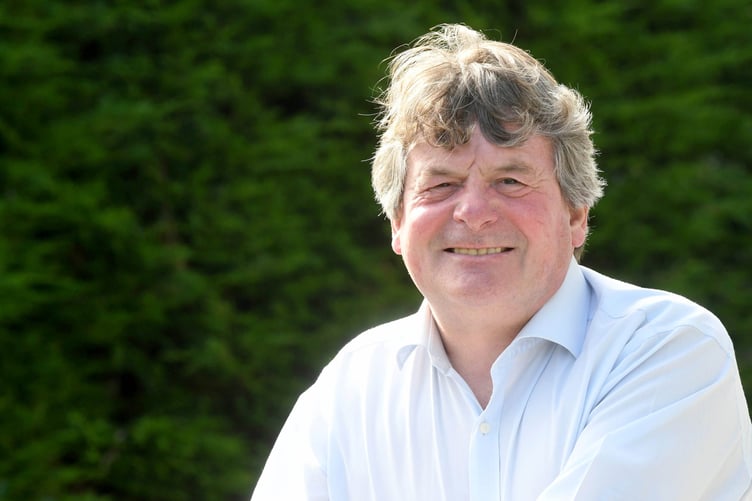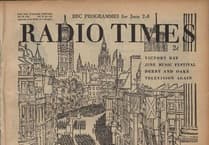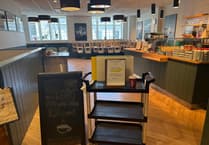I had a conversation with Mike King recently about the old Noble’s baths in Victoria Street Douglas, long since gone.
We were both taught to swim there by Mr Brady, who was dressed in a Captain Webb-style costume – woollen if I recall – and he would dangle a pole with a car inner tube and pull you along inside it.
[Captain Matthew Webb was the first man to swim the English Channel.]
I can still remember the very strong smell as we lined up on the stairs leading down to the baths for our session it must have been a heady mixture of salt and chlorine.
My memory had erased certain aspects of the pool such as the dead flies in the water but as Mike says if you could learn to swim successfully in such conditions. It gave you the confidence to swim practically anywhere!
I can remember clearly the cubicles along the side of the baths with their wooden doors and, at the deep end, bigger boys either jumping or diving from what must have been a balcony above.
There was a separate entrance to Russian baths and an area exclusively for females.
I remember also swimming galas being held and indeed competing, not very successfully, in for Scouts.
This would be in the 1960s and I wondered how long the facilities had been in place so decided I would do a little researching.
The first thing I discovered was that the baths I remembered were not the first on the site.
In 1875 John Robinson (slate and quarry agent from Manchester) proposed erecting an aquarium, baths, hotel and entertainment complex at the junction of the ‘new’ Victoria Street and Promenade.
The baths were opened by no less than Captain Webb in August 1877 but the company went into liquidation in August 1878 and the building was bought by Thomas Lightfoot at public auction for £8,500 including the ground.
Mr Lightfoot is perhaps better known for his involvement in the construction of the Douglas bay horse tramway, which opened in August 1876, with the complete track as far as the Peveril Hotel opened in January 1877.
The time from start of the concept to completion including necessary legislation through Tynwald being just over a year.
A profitable venture, he sold out in 1882 for £20,000, which was to be invested in the complex on Victoria Street. It appears that, in the intervening period up until the early years of the next century, they became less fit for purpose over time.
In those long-ago days Douglas Council was responsible for many things and indeed had a ‘baths committee’.
They had made representation to the Henry Bloom Noble Trust and had been offered £10,000 to purchase the site and buildings, which they did.
But they found during the course of a proposed refurbishment that much more work was required rebuilding the baths and the HBN trustees awarded a further £7,000 at low interest to complete the works.
At the opening ceremony in 1908 two years after the completion of the work and in the presence of a distinguished assembly, there were a number of interesting remarks of admiration at the finished product including: ‘The swimming bath was filled with sea-water, so translucent that the tiles at the bottom were as clearly to be seen as if the bath was empty, and the day being oppressively hot, the water presented a most tempting spectacle – so tempting that many present said they would much rather have had a plunge and splash in it than have listened to the speeches!’
Councillor Gill, the chairman of the baths committee, said: ‘This is an ideal site for baths for Douglas; this is where they are required – right down in the old town, where the houses are old and have no baths in them, and where the people are of the artisan class, and there are youths who require public baths in this position.’
The bath was 75 feet long by 30 feet wide, six feet at the deep end and three feet six at the shallow.
There were 18 slipper baths for males and six for females (10 first class and eight second class for males and three first class and three second class for females) with a choice of hot or cold fresh or salt water (salt water being the most popular) supplied by copper pipes with gunmetal taps and the baths themselves were of ivory porcelain.
Councillor Gill boldly stated ‘these baths, we expect, will be as good 200 years hence as they are today’ to laughter and applause!
In the two years prior to the official opening ceremony 65,000 people had used the facilities. Four thousand young people had been given free admission.
Councillor Marsden said: ‘I am reminded of the old days when I was a boy, and used to go to the middle school in Douglas.
‘We had no baths in those days,and the masters used to take us down on the shore to bathe.
‘When I go through the streets now,and see the boys coming from their various schools to these baths with their towels and looking so happy I think this money that the Noble’s trustees have given to the corporation has been one of the most well-spent amounts that they have given.’
He went on: ‘Now we have a beautiful ladies’ swimming bath, and I am pleased to know it is taken advantage of by the ladies of Douglas very considerably.’
Alderman Robert Corlett stated in relation to the benefits of the baths: ‘I do think anything which will make the young men stronger and better equipped to fight the battle of life,and make it easier for the old man to soothe the afflictions of his last days,is noble work,and is for the good of the community.’
How sad that only a few years later these words would come to be the case for so many young men.
The Clerk of the Rolls, a trustee of the HBN trust, said: ‘I think it is of the utmost importance that these baths should be as nearly as possible free to all classes. If you cannot open the baths for nothing, do it for next to nothing, more particularly for the poor children of the town.’
Following the opening a reception was held at the town hall.
It was catered for by Mr Wilson, who operated a restaurant in Victoria Street.
His menu on the day included sandwiches, chicken and ham, tongue, ham, cress, tomato, veal and ham pies, pastries assorted, strawberries and cream, vanilla ice, strawberry ice, tea, coffee, lemonade, champagne cup, claret cup, fruit.
So back to the start, it was more than 50 years later that Mike King, myself and so many other young Manx people learned to swim in these baths.
How many thousands had used the facilities in between?
When we were learning the baths had no doubt served their purpose and were certainly getting past their best!
When we attended Ballakermeen School one of the big attractions was the ‘modern’ swimming pool with fresh blue water rather than the pungent smelling green water we recalled from Noble’s Baths. Lots of us then went on to take bronze, silver and gold swimming proficiency medals at Ballakermeen.




